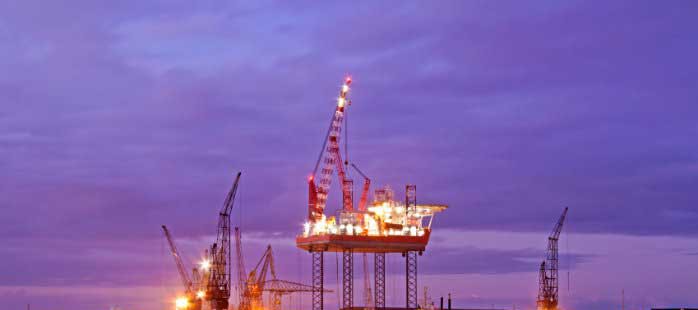Our Opinion: 2018
Oil bulls are about to be disappointed

Dubai does not have the enormous oil wealth enjoyed by its neighbours such as Abu Dhabi. Its main source of wealth has historically been as a port. In recent years it has sought to make money from property development and luxury tourism, building impressive hotels such as the Burj al-Arab.
Nevertheless, the oil price is being discussed by virtually every client I have met whilst visiting this week. There is no doubt that much profit from the oil price is spent in Dubai stores and hotels and fluctuating prices concern many.
Oil prices fell back suddenly over the last few trading sessions, dragged down by some forces beyond the oil market. The steady decline of the US Dollar has helped drive up crude prices for weeks, but that came to an abrupt halt last week.
At the same time, sudden turmoil in the broader financial system also bled over into the oil market. Volatility in the stock market flared up on Friday, sparking the sharpest single-day upheaval in years.
The stronger-than-expected job growth and wage increases fueled speculation that the Fed would tighten interest rates more than previously thought. Bond yields continue to rise, undercutting equities. Signs of higher inflation also led to speculation of interest rate hikes from the central bank.
The problem for oil is that both oil prices and broader stock indices are seen as overvalued by some analysts. Hedge funds and other money managers have piled into bullish bets on crude, leaving positioning in the futures market over-extended.
An unraveling of positions from major investors could expose WTI and Brent to sudden losses. That correction tends to occur when a spate of news goes against existing sentiment. The broader financial system is finally facing some questions after a remarkable bull run, which is magnifying the danger for crude benchmark prices.
Brent futures have jumped by almost 40% in six months and 140% since oil prices bottomed in January 2016. Oil recently reached $70 a barrel for the first time since early 2015. We’re in the strongest period of oil demand growth since the crisis now that a synchronised global recovery is taking hold. China is stockpiling oil with gusto. Worldwide daily demand was 90.6 million barrels per day (mbpd) in 2012, but has now reached 97mbpd.
We have also seen the return of a geopolitical risk premium, worth something like $10 a barrel on the price. The Trump administration has threatened to impose new sanctions against Iran, while popular protests there could embolden regional foe Saudi Arabia into doing something really silly.
Meanwhile, a deal between oil exporters’ cartel Opec and Russia to trim output has also helped mop up much of the global glut that developed in recent years. In the past such agreements have tended to amount to little as Opec members have often cheated on production quotas to maximise revenues. But this time round the deal has stuck. Oil inventories in the industrialised world have shrunk to a three-year low, according to the International Energy Agency.
But they could soon be on the way up again. Around $55 a barrel is the breakeven point for US shale-oil production, and it is coming back with a vengeance. The recovery in prices over the past two years has underpinned a steady increase in the number of active drilling rigs. America’s Energy Information Administration is pencilling in a 100% jump in US shale production in 2018. Overall US crude output is set to reach a new record of 10.3mbpd this year.
And while the market appears to be shrugging off this prospect for now, just wait until the production jump becomes increasingly visible later in the year. Ed Morse of Citigroup notes that geopolitical worries can abate quickly too.
Unless there is a serious supply disruption, $65 a barrel is a ‘natural ceiling’ for the oil price. It’s unlikely oil can regain its previous peaks, even with a fast-growing global economy. As Jeremy Warner recently told The Daily Telegraph “The oil uber bulls are again about to be disappointed.”
7th February 2018
